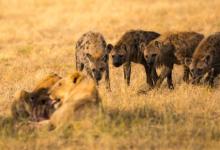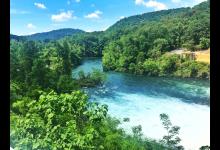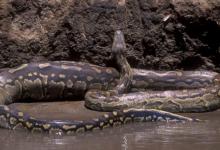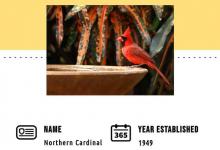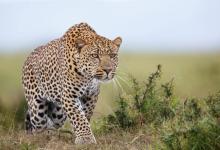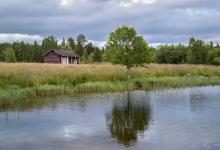Discover the 20 Largest Reptiles Still Living in Canada
With its super cold temperatures, Canada is a tough place to find reptiles. According to “winter is an extremely harsh time for reptiles and amphibians in colder climates.” Cold-blooded creatures that live toward the North usually burrow underground during the winter months. This helps keep them warm and their body temperature regulated.
You are furthermore the reason you do not find many forms of reptiles in Canada. Considering this, there are roughly 10,000 different reptiles living there. The majority of those are snakes, aka Serpentes.
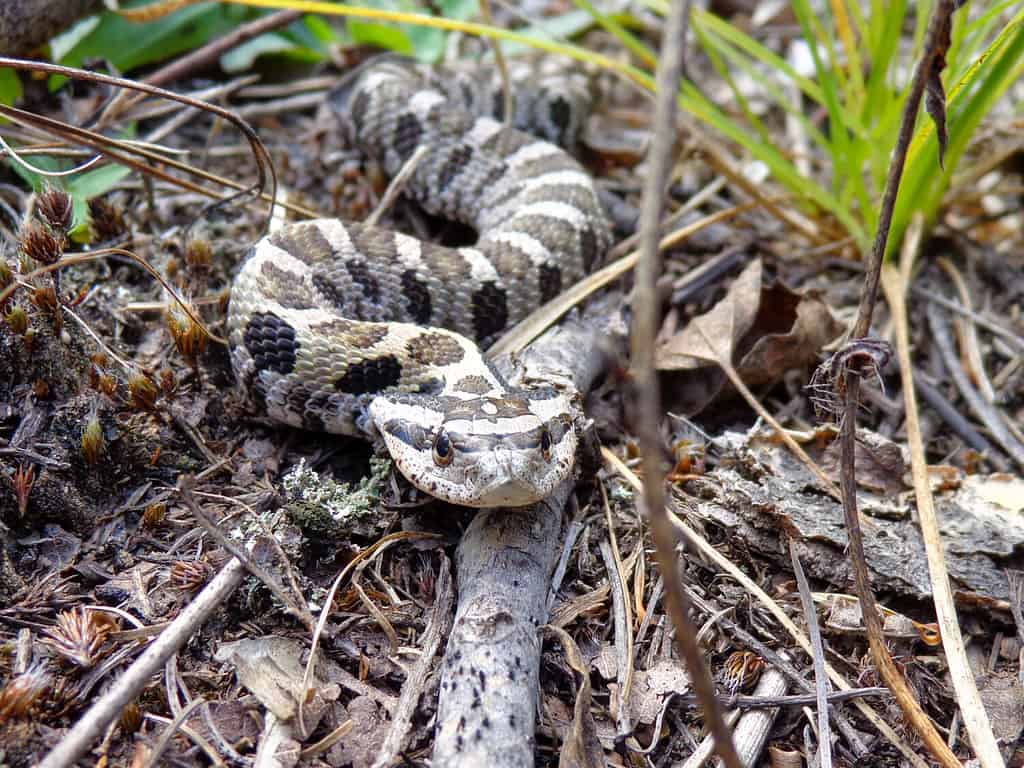
©IHX/Shutterstock.com
It is NOT just Snakes
Yes, snakes are more prevalent. But there are others. Canada has a total of 43 different kinds of reptiles. Look at my list of 20 Largest Reptiles Still Living in Canada to see what else there is. I have divided it into three groups: Amphibians, snakes, turtles, and lizards.
Amphibians (Amphibia)
The Lissamphibia group ranges in species of animal. Amphibia is one species found which are four-legged creatures. Canada has lots of different kinds. Toads and salamanders also make up this group.
1. Canadian Toad (Anaxyrus hemiophrys)
Dakota toad is another name this reptile goes by. A male toad can grow up to 3 inches, weighing about 55 grams.
2. Bullfrog (Lithobates catesbeianus)
Canada’s most giant frog is considered to be the . They can grow up to 7 inches big. They need large bodies of water, significantly to help with breeding. Depending on the conditions, Bullfrogs are active from April through September. When the cold winter months hit, they go into hibernation underground underwater.
3. Northern Red-Legged Frog (Rana aurora)
These frogs can grow between 2-4 inches big. They have a red body and a yellow belly. As a result, this frog is not looking for large, fast-paced bodies of water. They want the water that moves slowly.
4. Mudpuppy (Necturus maculosus)
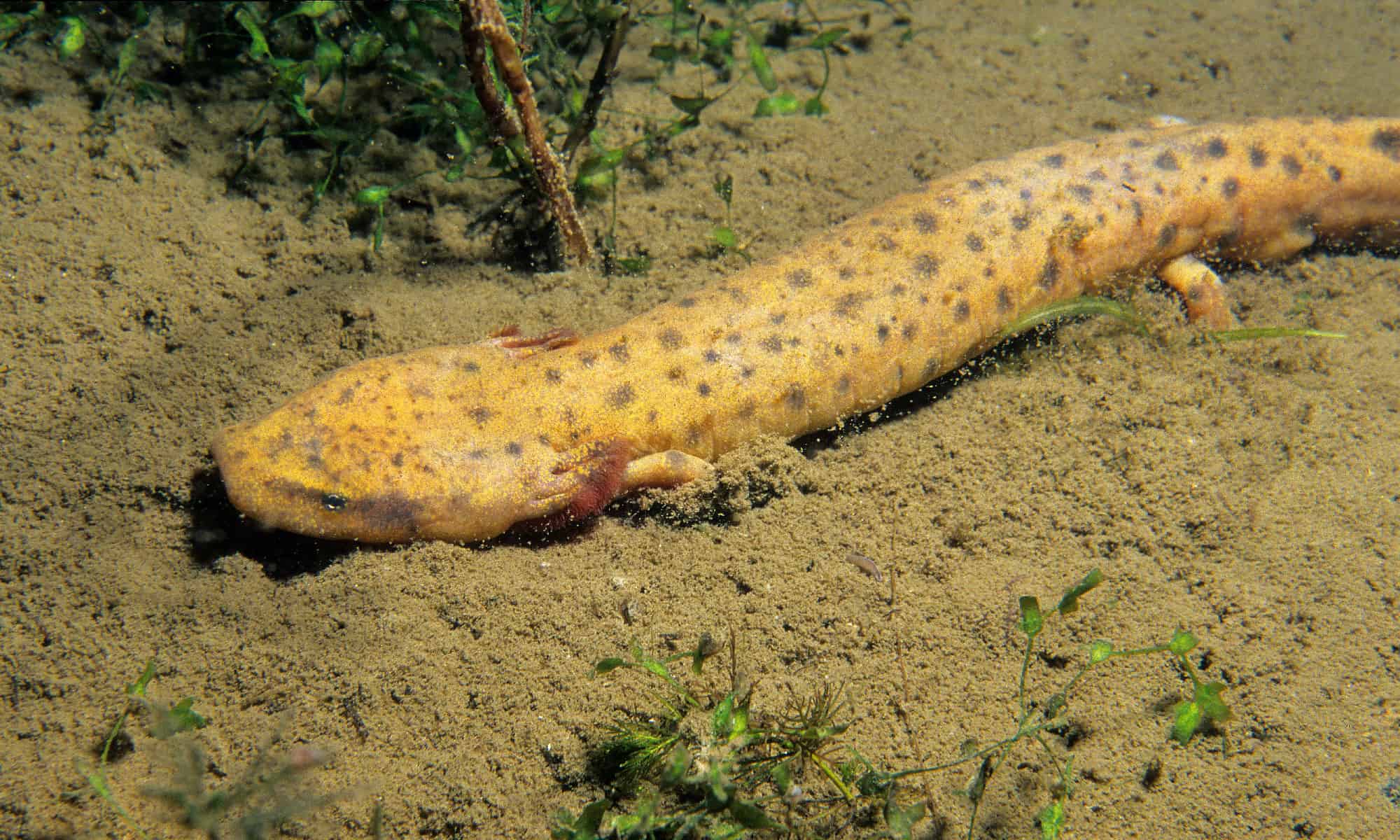
©RLS Photo/Shutterstock.com
Mudpuppy’s can get up to 16 inches long. By far the most enormous known to Canada. Mostly living underwater, as they age, they can venture out onto land. But they still prefer to stick to the water.
5. Coastal Giant Salamander (Dicamptodon tenebrosus)
Salamanders can vary in size. There are smaller salamanders, and then there are bigger ones. Typically, a salamander can be anywhere between 1 to 5 inches long. Above all, as salamanders go, in Canada, this one is the biggest. It can grow over 13 inches! In short, Wikipedia says their tail accounts for over 40% of their length. This is the only salamander species with vocal abilities.
Snakes (Serpentes)
Did you know that snakes have amniote vertebrates? Positioned inside a sack and then covered in multiple scales overlapping each other to keep the vertebrates safe.
The says there are 25 different species of snakes in Canada. In addition to that, there are about three total families of snakes located in Canada:
- colubrid (colubridae)
- boa (Boidae)
- garter (thamnopis)
To sum up the sizing of snakes, we all know that garter snakes are not a very big snake species. Yet, colubrid’s and boa’s are on the larger end. The larger of the two is Colubrids.
6. Gray Ratsnake (Pantherophis spiloides)
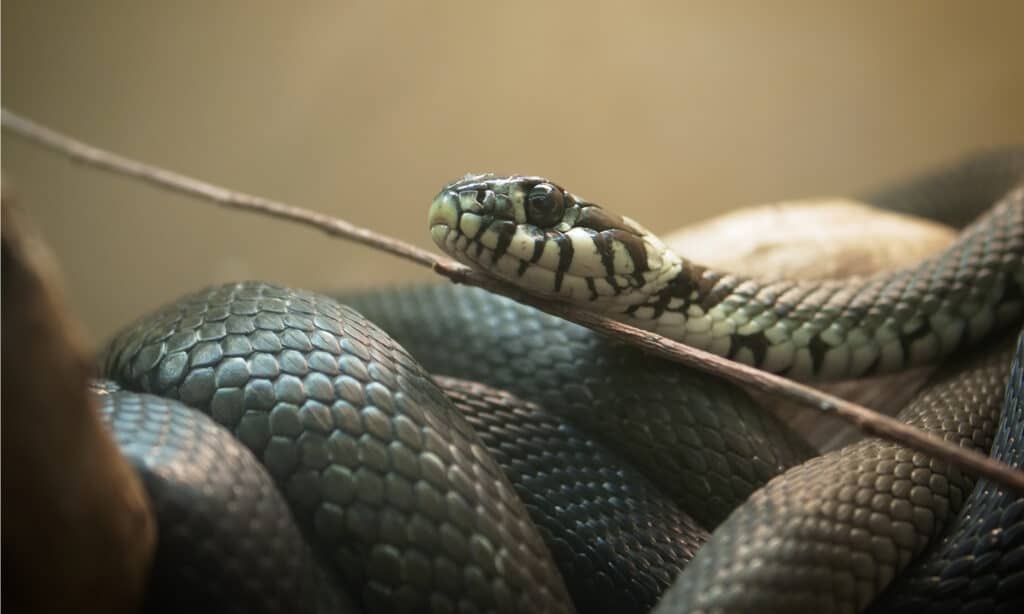
©dkHDvideo/Shutterstock.com
Getting the title of the most giant snake in Canada is because it can reach 100 inches in length. Found in various regions worldwide, it is a threatened species in Canada. We have known since April 1998 that this reptile has been losing its Canadian habitat due to the expansion of civilization. Expansion is a huge problem. The roads that are being built for the town are causing accidents. Snakes are being run over while trying to bask in the sun.
7. Bullsnake (Pituophis catenifer sayi)
Even crazier than the ratsnake is the bullsnake. This snake found in Canada can get up to 78 inches in length!! These snakes can be very temperamental, having a more aggressive side. You see these snakes in Canada by river beds and in grassy prairies.
8. Eastern Foxsnake (Pantherophis vulpinus)
Although these snakes can grow up to 65 inches long, most will be much smaller. This snake is usually on the smaller end. The fox snake takes down its prey by wrapping around it and squeezing. It uses strangulation as a result of being non-venomous. It’s bite will not harm you, but it’s muscle strength will.
9. Western Rattlesnake (Crotalus atrox)
Canada does not hold a massive group of this species. They prefer to live in dry climates, which is why we find this reptile in the southern borders of British Columbia. On the other hand, what’s crazy is this snake species can grow up to 60 inches. The expansion of civilization and the growth in agriculture have helped decrease the numbers.
10. North American Racers (Coluber constrictor)
These snacks come with a mask around their eyes, almost like that of a raccoon. They can reach up to 75 inches in length but usually end up a little smaller than that. They are known to be an incredibly fast snake. The snakes prefer warmer weather, so you will not find a vast population throughout Canada.
Also, check out the black racer,a relative of the northern black racer.
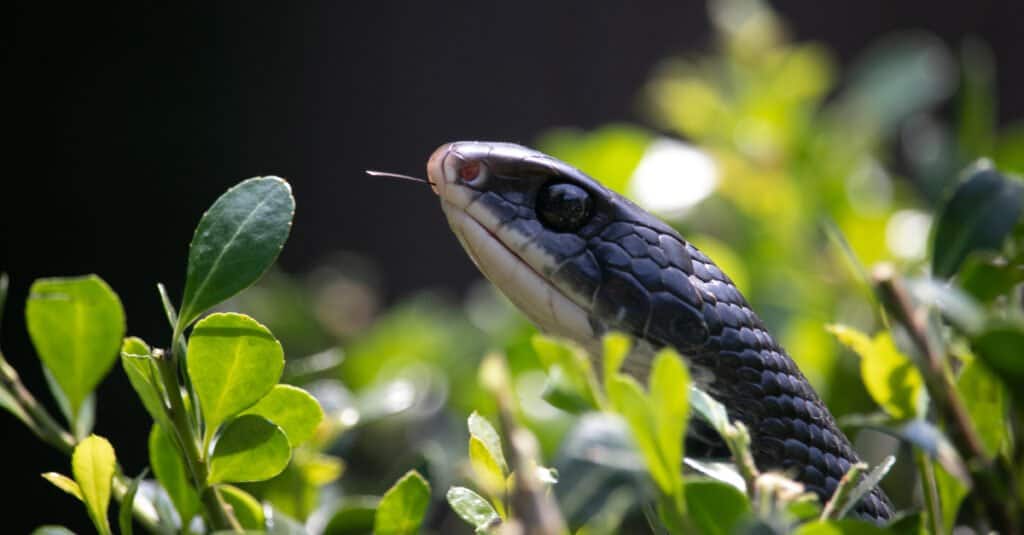
©TjacksonVii/Shutterstock.com
Turtles (Testudines)
11. Leatherback Sea Turtle (Dermochelys coriacea)
Canadian seas are home to this species. This is not a freshwater animal. It is located in the ocean. You can easily distinguish this from other sea turtles. First off, you would do this by looking at the shell. The leatherback sea turtle is scale-less and has long bones running down the length of its back. They are hidden under their skin, which is a tightly wrapped leather-like exterior. A regular sea turtle’s shell is covered in scales. These scales make their shell feel hard and sharp in spots. Secondly, this turtle weighs over 1500 pounds and is about 6 feet long. That is spot-able!
12. Eastern Snapping Turtle (Coluber constrictor)
It is not only their size that gets their attention. These turtles are known for their strong bite. They can get about 14-20 inches long and weigh anywhere from 10-40 pounds! That is like the size of a corgi or a miniature poodle. I want to mention that these are freshwater species. It is not an animal to be found in the oceans surrounding Canada, but definetly found in the lakes, swamps, and marshes within the continent.
13. Spiny Softshell Turtle (Apalone spinifera)
Like the eastern , this turtle can get 7-21 inches long. Unlike any other turtle, the spiny softshell turtle can live in different conditions. With habitats that range in structure and set up, it has no specific living arrangement. Although they prefer shallow water, they have also been found in deeper bodies.
14. Northern Map Turtle (Graptemys geographical)
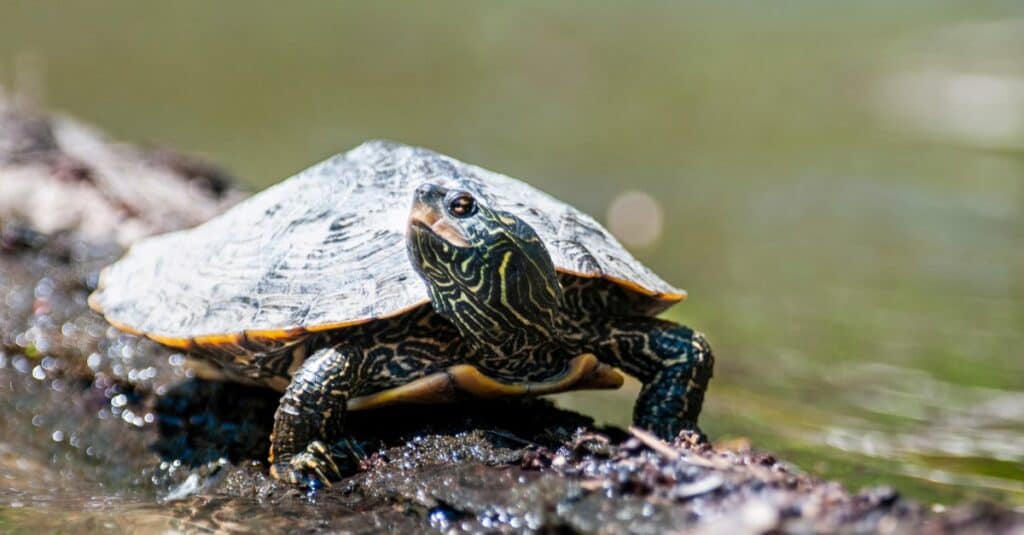
©RLS Photo/Shutterstock.com
This turtle is usually found in riverbeds. It is said to be endangered due to the “pet trade,” where people capture them for commercial sale. Or also just for their pet’s gain. These turtles are not fans of the colder climates, usually hibernating during the cold season. This turtle is known to be on the smaller end, getting anywhere from 6-10 inches in length.
15. Wood Turtle (Glyptemys insculpta)
According to the , the wood turtle is endangered. This means there are not many left in the world, and we need to protect the ones that are. The reason is habitat loss. Wood turtles are not incredibly large, weighing anywhere from 1-3 pounds and getting as big as 10 inches in length.
Lizards (Lacertilia)
16. Greater Short-horned Lizard(Phrynosoma hernandesi)
Sometimes referred to as the mountain short-horned lizard, this lizard is often confused with its relative, the pygmy short-horned lizard, but they are different. For starters, the Greater short-horned lizard is more enormous. This lizard can be anywhere between 2-5 inches long, with females being more significant than males, getting as long as 7 inches. This lizard is known to be a mountain dweller enjoying heights of 900–11,300 feet! They can also be found in the plains if a mountainous range is unavailable.
17. Pygmy Short-horned Lizard (Phrynosoma douglasii)
A common name for this reptile is “horny toad,” even though it is not an amphibian. It is a reptile and closely related to the greater short-horned lizard. Yet, the pygmy short-horned lizard is relatively tiny, primarily when fully grown. In British Columbia, they had found a minimal population of these lizards the last time they did a count. Therefore, this lizard has been considered extinct in the upper Canadian regions.
18. Northern Alligator Lizard (Elgaria coerulea)
This is an enormous lizard, getting roughly 10 inches in length from snout to tail. This is another lizard who likes the mountainous range, usually found in the Rocky Mountains of British Columbia. This lizard tends to live in a variety of habitats. They can live anywhere from the ground up. During winter, this lizard goes into brumation to help keep itself warm. By doing this, they can preserve their energy and stay warm.
19. Common Five Lined Skink (Plestiodon fasciatus)
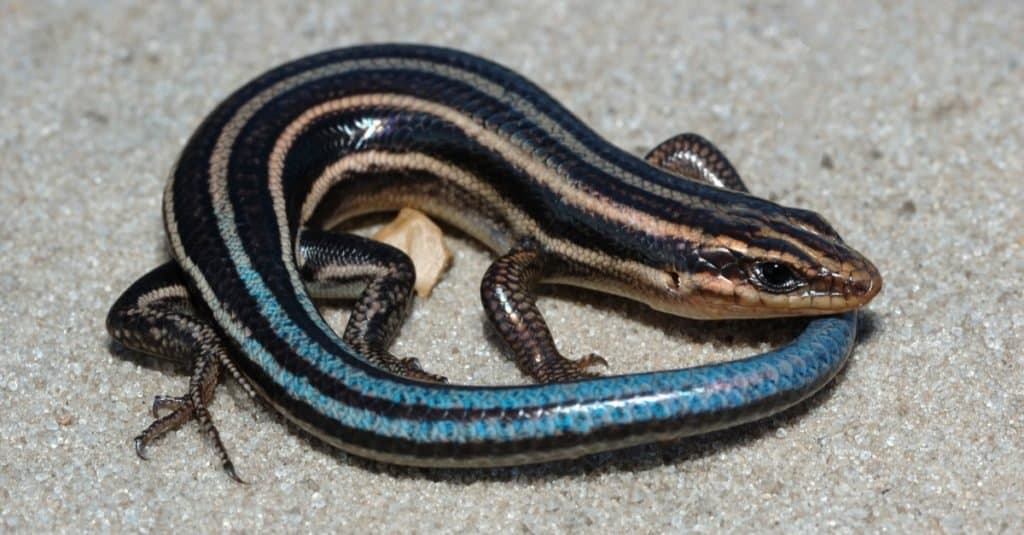
©James DeBoer/Shutterstock.com
Uncommon to most, the common five-lined skink has teeth. Typically, they are pretty docile creatures. There are teeth in their mouth, though, if you get bit. Not only wooded areas but precisely locations with wood on the ground for them to hide. These lizards can gear anywhere between 5-9 inches long.
20. Northern Prairie Skink (Plestiodon septentrionalis)
This smooth lizard can grow up to 8 inches in length. Unlike its counterparts, the common five-lined skink, these lizards like grassy areas. They like to hide under small stones and bask in light soil. They can be anywhere from 5-9 inches in length. Extinction has not hit this species as of yet, but the “Committee on the Status of Endangered Wildlife in Canada ” said they were of “special concern.”
So, I have created a chart to conclude the 20 Largest Reptiles Still Living in Canada. Listing Canadian reptiles from most significant to most minor and the class of animal they belong to.
| Rank | Reptile | Size | Class |
|---|---|---|---|
| 1 | Leatherback Sea Turtle (Dermochelys coriacea) | length: 6 feet weight:1500 pounds | Turtle |
| 2 | Gray Ratsnake (Pantherophis spiloides) | length:100 inches | Snake |
| 3 | Bullsnake (Pituophis catenifer sayi) | length: 78 inches | Snake |
| 4 | North American Racers (Coluber constrictor) | length: 75 inches | Snake |
| 5 | Eastern Foxsnake (Pantherophis vulpinus) | length: 65 inches | Snake |
| 6 | Western Rattlesnake (Crotalus atrox) | length: 60 inches | Snake |
| 7 | Mudpuppy (Necturus maculosus) | length: 6-16 inches | Amphibian |
| 8 | Eastern Snapping Turtle (Coluber constrictor) | Common Five-lined Skink (Plestiodon fasciatus) | Turtle |
| 9 | Coastal Giant Salamander (Dicamptodon tenebrosus) | length:13 inches | Amphibian |
| 10 | Spiny Softshell Turtle (Apalone spinifera) | length: 7-21 inches | Turtle |
| 11 | Wood Turtle (Glyptemys insculpta) | length: 10 inches weight:1-3 pounds | Turtle |
| 12 | Northern Alligator Lizard (Elgaria coerulea) | length: 10 inches | Lizard |
| 13 | Common Five Lined Skink (Plestiodon fasciatus) | length: 5-9 inches | Lizard |
| 14 | Northern Prairie Skink (Plestiodon septentrionalis) | length: 5-9 inches | Lizard |
| 15 | Bullfrog (Lithobates catesbeianus) | length: 7 inches | Amphibian |
| 16 | Greater Short-horned Lizard(Phrynosoma hernandesi) | length: 7 inches | Lizard |
| 17 | Northern Map Turtle (Graptemys geographical) | length: 6-10 inches | Turtle |
| 18 | Pygmy Short-horned Lizard (Phrynosoma douglasii) | length: 6 inches | Lizard |
| 19 | Canadian Toad (Anaxyrus hemiophrys) | length: 3 inches weight: 55 grams | Amphibian |
| 20 | Northern Red-Legged Frog (Rana aurora) | length: 2-4 inches | Amphibian |
